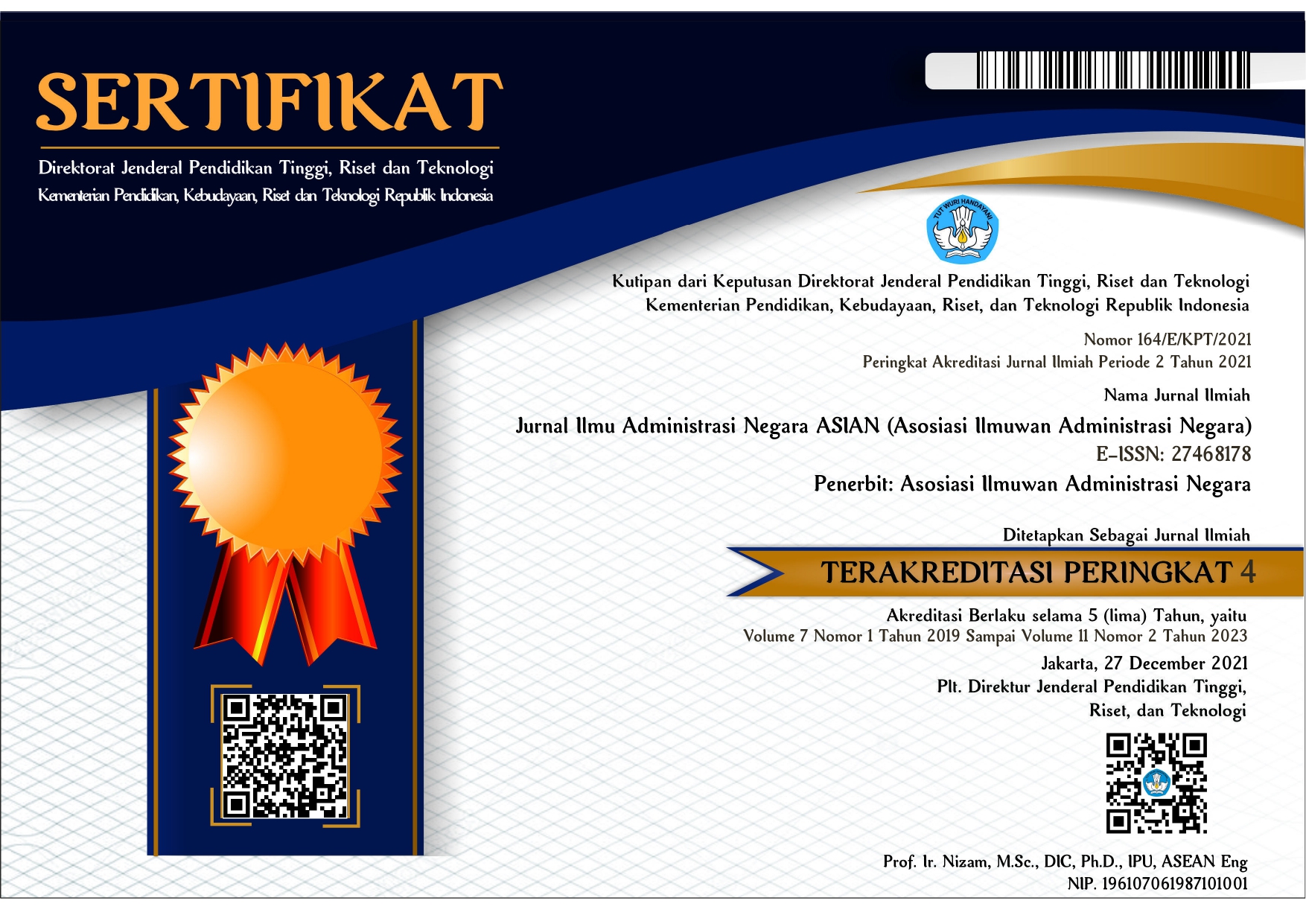Perencanaan Strategi Pengembangan Potensi Desa Cemoro Sebagai Desa Wisata Berbasis Masyarakat dan Budaya
 Abstract views: 824
,
Abstract views: 824
,
 PDF downloads: 1631
PDF downloads: 1631
Abstract
There are obstacles in the development of Cemoro Village as a community and culture-based tourism village which makes the development process of a tourism village not conducted optimally. The obstacles faced are the lack of coordination between the Tourism Awareness Group (Pokdarwis) and the Cemoro government and the Department of Culture, Youth, and Sports of Temanggung Regency, the lack of facilities and infrastructure to support the development of the tourist village, and the lack of public awareness in developing and maintaining the existing natural, cultural, and religious potential. Therefore, there must be planning suggestions in the process of developing the tourist village.The author used the theory of the strategic planning process according to Bryson which has eight steps. In this study, the authors used only four of Bryson's eight strategic planning processes: assessing the external environment, assessing the internal environment, identifying strategic issues faced by the organization, and formulating strategic strategies to manage these issues.
This research used descriptive qualitative research methods and quantitative research methods. The research location was in Cemoro Village, Wonoboyo District, Temanggung Regency. The primary data sources were obtained through informants and sources, and the secondary data sources were obtained through archives and documents. The data collection techniques were in the form of interview, observation, documents, and questionnaires. The sampling was done by sampling technique, and the data validity was done by using source triangulation technique. the data analysis techniques were done by conducting Qualitative Analysis, SWOT Analysis, and Litmus Test.
From the results of research using the litmus test, there are 4 issues that are very strategic, including: maximizing coordination with related agencies to increase tourism potential, building facilities and infrastructure by involving the local community, conducting discussion with the community about the importance of preserving nature that can be tourism potential, and optimizing cooperation with communities/volunteers to conduct training on tourism management.
Downloads
References
A.F.Stoner, J. (2003). Manajemen. Jakarta: Erlangga
Bryson, J. M. (1999). Perencanaan strategi bagi organisasi social. Yogyakarta: Pustaka Pelajar.
Bryson, J. M. (2007). Perencanaan Strategis bagi Organisasi Sosial. Yogyakarta: Pustaka Pelajar.
Drs.Sofar Silaen dan Widiono. 2013,Metodelogi Penelitian Sosial Untuk Penulisan Skripsi dan Tesis, In Media.
Freddy Rangkuti, 2008, Analisis SWOT Teknik Membedah Kasus Bisnis, PT. Gramedia Pustaka Utama, Jakarta
KKN TIM 1. 2019. Masterplan Pengembangan Pariwisata Kecamatan Wonoboyo Kabupaten Temanggung. Universitas Diponegoro
M.H. Matondang. 2008. Kepemimpinan Budaya Organesasi dan Manajemen Strategik. Cetakan Pertama. Yogyakarta : Graha Ilmu
Moleong, L. J. (2005). Metodologi Penelitian Kualitatif. Bandung: Remaja Rosdakarya.
Rangkuti, F. (2008). Analisis SWOT Teknik Membedah Kasus Bisnis. Jakarta: Gramedia Utama.
Sugiyono. (2016). Metodologi Penelitian Kuantitatif, Kualitatif, dan R&D. Bandung: CV Alfabeta.
Copyright (c) 2021 Jurnal Ilmu Administrasi Negara ASIAN (Asosiasi Ilmuwan Administrasi Negara)

This work is licensed under a Creative Commons Attribution-ShareAlike 4.0 International License.
Authors who publish with this journal agree to the following terms:
1. Copyright on any article is retained by the author(s).
2. The author grants the journal, right of first publication with the work simultaneously licensed under a Creative Commons Attribution License that allows others to share the work with an acknowledgment of the work’s authorship and initial publication in this journal.
3. Authors are able to enter into separate, additional contractual arrangements for the non-exclusive distribution of the journal’s published version of the work (e.g., post it to an institutional repository or publish it in a book), with an acknowledgment of its initial publication in this journal.
4. Authors are permitted and encouraged to post their work online (e.g., in institutional repositories or on their website) prior to and during the submission process, as it can lead to productive exchanges, as well as earlier and greater citation of published work.
5. The article and any associated published material is distributed under the Creative Commons Attribution-ShareAlike 4.0 International License








